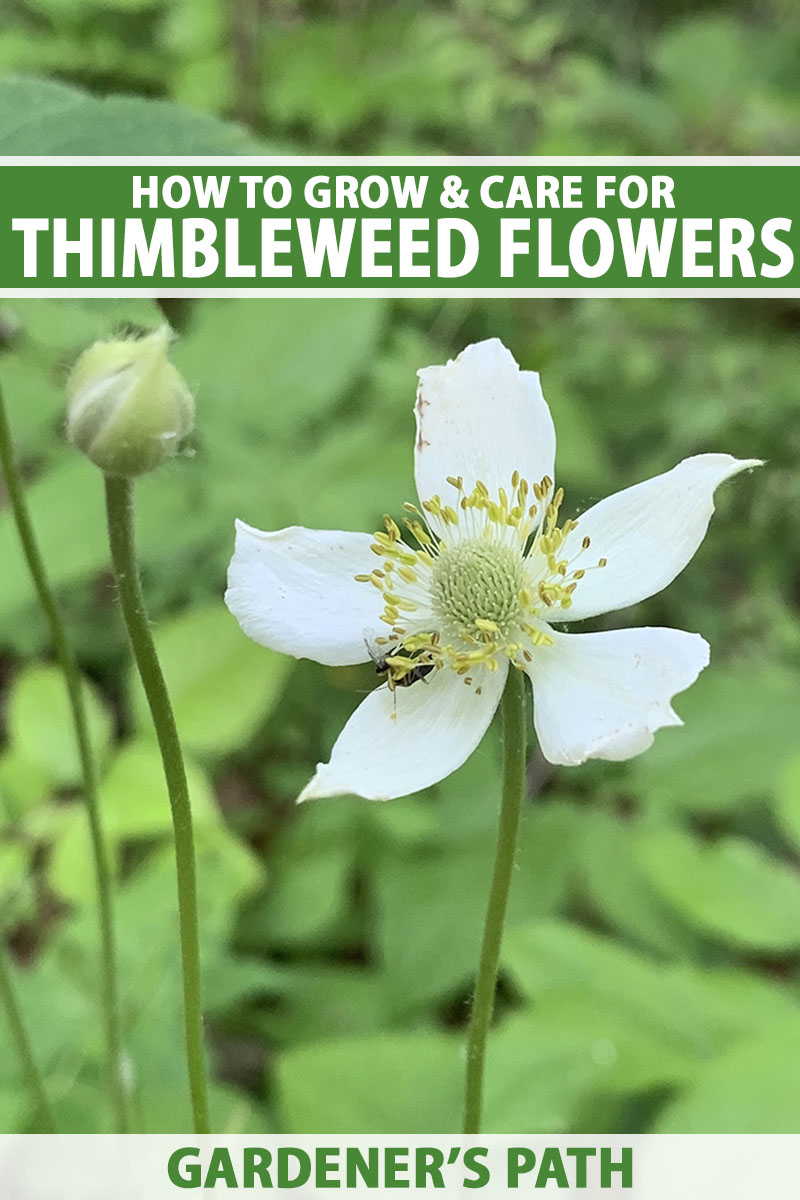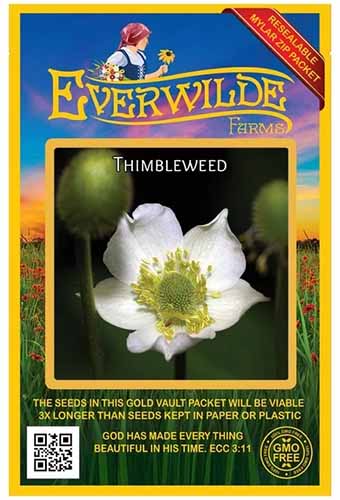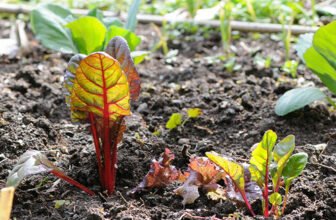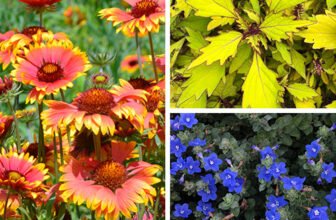
[ad_1]
Anemone virginiana
A native summer wildflower ranging across central and eastern North America, thimbleweed is often overlooked.
Its understated flowers, which generally appear in midsummer, can only truly be appreciated up close. Sporting a tall, conical mound in the center of its flowers, it’s this unusual structure that gives the species its name.
Adaptable, forgiving, and wonderful for wildlife of all shapes and sizes, this species is a must have for naturalizing, or growing in a native plant garden.
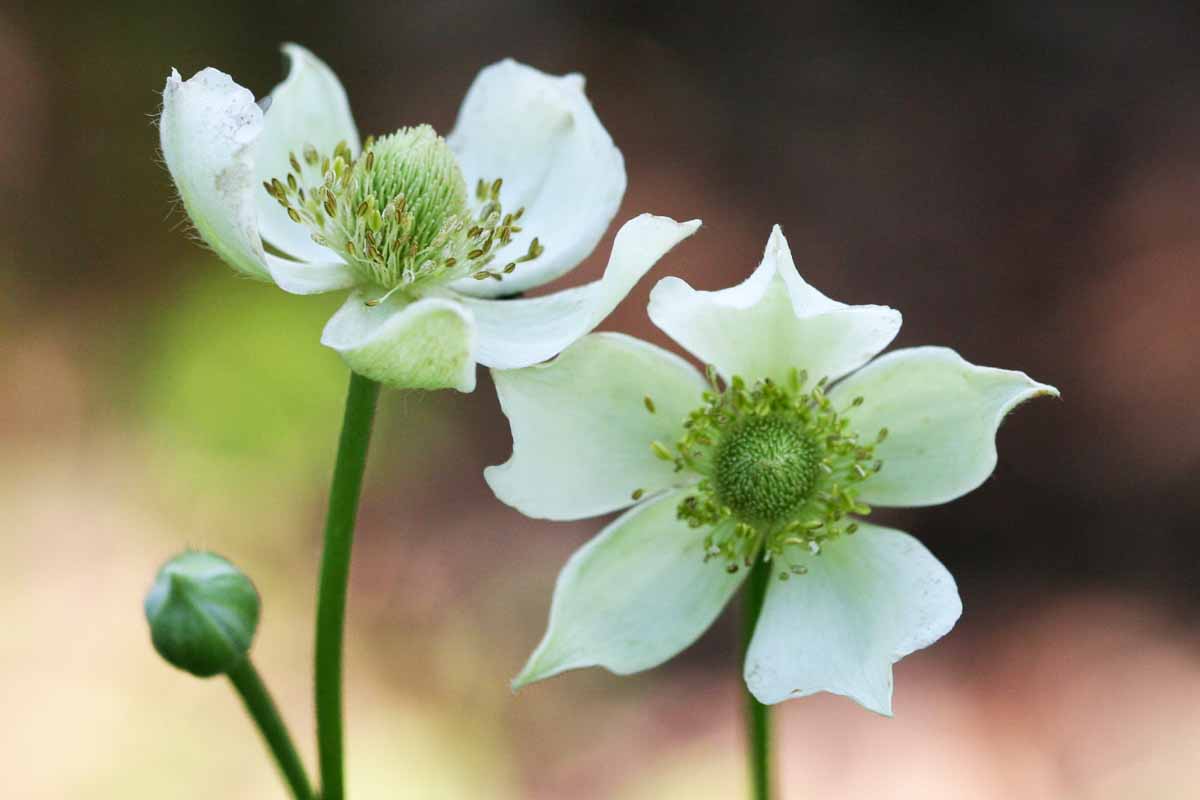

We link to vendors to help you find relevant products. If you buy from one of our links, we may earn a commission.
Thimbleweed is hardy in USDA Zones 2 to 8 and will survive almost any weather nature can throw at it.
You’ll find this tough native growing in open, sunny woodland glades, the well-lit fringes of woodlands, the edges of meadows, and bright, rocky slopes. It thrives in freely draining soils ranging from slightly acidic to slightly neutral.
In short, in the garden setting, you can grow this flower almost anywhere but low, soggy places.
Read on to find out more about growing this little wildflower. Here’s what I’ll cover:
What Is Thimbleweed?
A dainty member of the showy buttercup family, Anemone virginiana is beautifully understated and incredibly tough.
Growing up to two feet tall and one foot wide, this species sports inch-wide flowers held on long, skinny stalks.
The flowers are white to pale cream, and surround a central mound covered in yellow, pollen-producing stamens. Typically, flowers appear from May through June.
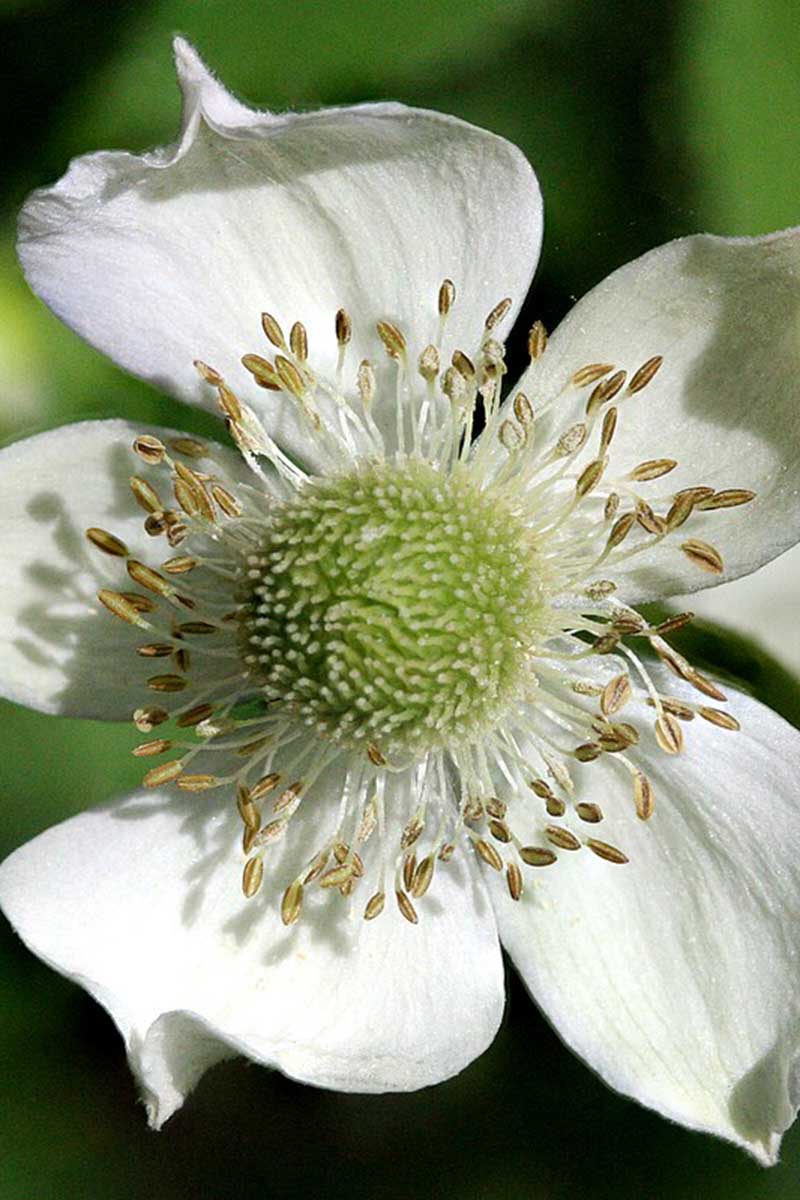

The flowers, however, are not the best part of this little plant. After blooming, A. virginiana produces seeds surrounded by a tuft of dense, fluffy hairs.
These aggregations of furry fruits create wonderful texture in the garden almost year round, and the seeds are excellent food for birds.
The leaves of A. virginiana are reminiscent of buttercup leaves and are compound, toothed, and lobed. In layman’s terms, this means the foliage is frilly, highly textured, and divided into many leaflets.
Cultivation and History
Like many of its buttercup brethren, all parts of thimbleweed are toxic if consumed in large quantities.
This of course hasn’t deterred enterprising humans from harvesting the plant and brewing it into numerous decoctions and remedies.
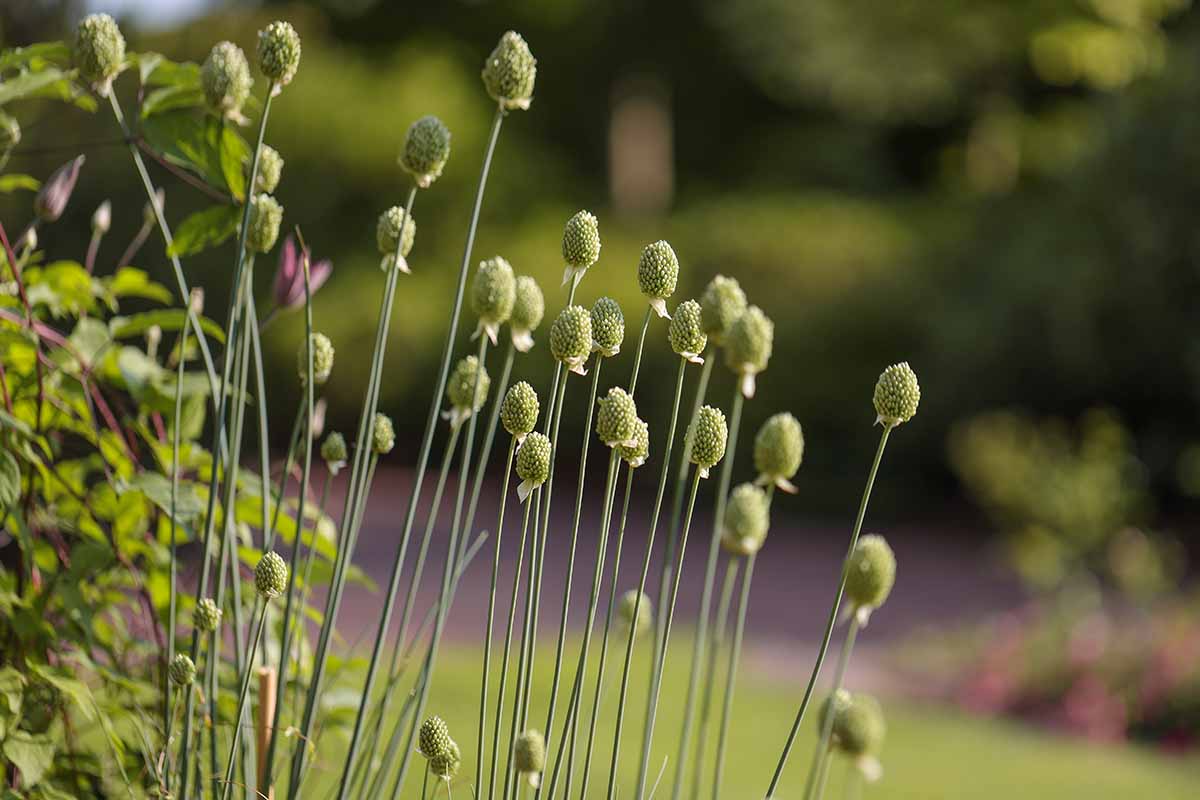

Native tribes such as the Haudenosaunee used the roots as a treatment for tuberculosis. The seeds were also used as an emetic and expectorant to cure whooping cough and diarrhea.
How effective these so-called treatments are is still up for debate, though many members of this genus do have proven anti-cancer and anti-inflammatory properties.
Remember, never use any part of any plant medicinally without consulting a professional first.
Although this species has a long relationship with man and his medicines, thimbleweed has only recently arrived on the horticultural scene.
With the relatively new native plant trend firmly taking root, tough, wildlife-friendly perennials like A. virginiana are a good choice for almost any type of garden setting.
Find more on how to grow this beginner-friendly perennial below!
Thimbleweed Propagation
Generally speaking, there are only two ways to grow these wildflowers.
Cultivation from seed can be a little tricky, so if you’re not up for that challenge, focus your energy into finding a good native plant nursery that might carry this harder-to-find species.
Often, if a nursery does not carry a particular plant, you can request they order in plugs for you from another source.
The nursery will typically charge a little fee for this, but it’s worth it to track down these less mainstream plants.
From Seed
More likely than not, if you live in the native range of this resilient species, it’s growing somewhere near you.
If you want to source your seed from the wild, it’s easiest to identify plants to collect from when they’re flowering and most conspicuous. Keep your eyes peeled along trails and at the edge of woodlands starting in May.
Once you identify a cluster of fruiting thimbleweeds, ensure the seed heads are loose and come apart easily, indicating ripeness. Usually, this happens around the end of the summer.
Collect the seed into an envelope, making sure to leave enough for natural dispersal to take place. A good rule of thumb is to only take about 10 percent of available seed from sources where collecting is permitted.
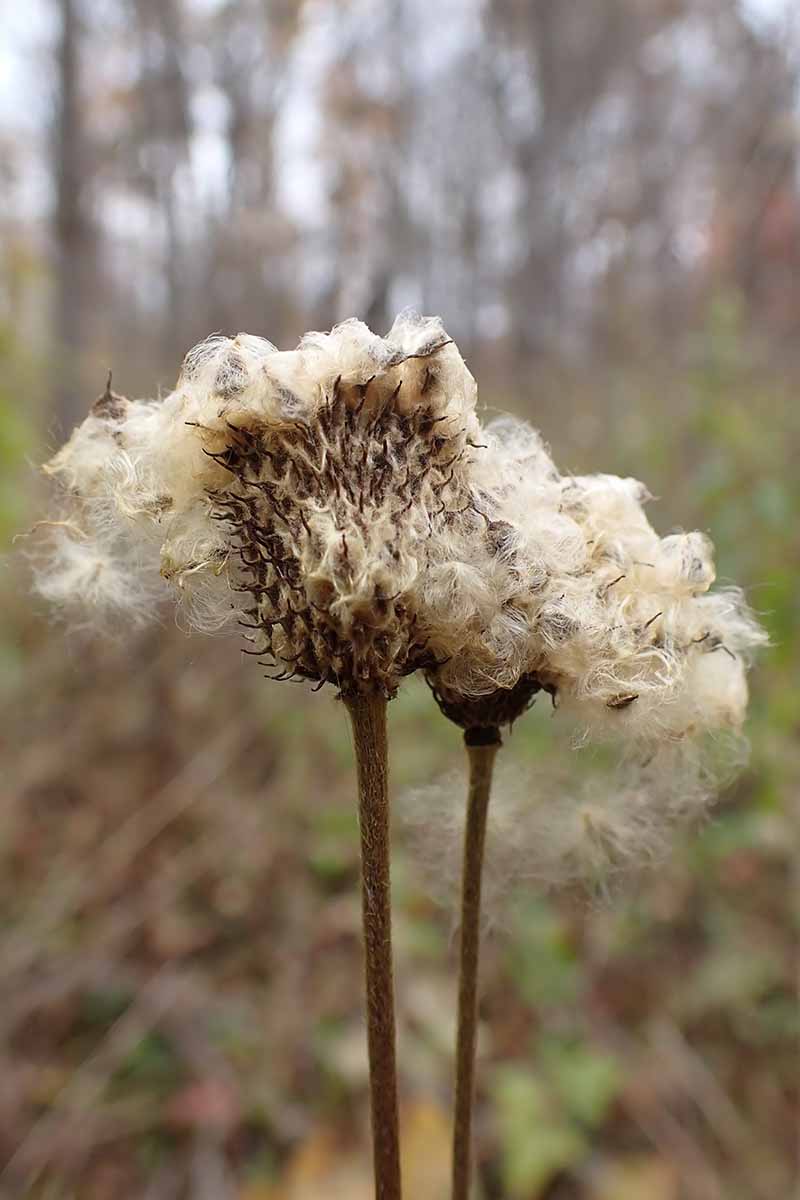

If you don’t want to try your hand at seed collecting or plants aren’t available locally, seed can be purchased online.
Cleaning the fluffy, hairy seed of thimbleweed is incredibly time consuming. Skip this step and surface sow this species directly into the garden after harvesting.
Exposure to the outdoor elements will rid A. virginiana seed of the hairs gradually, and cold stratify it too. Cold stratification is exposure of seed to cold temperatures to aid the process of germination. Almost all species native to the temperate climes need it.
Thimbleweed doesn’t always transplant well ,so choose a sowing site in the garden that is well lit, free of weeds, and freely draining.
Scratch up the top inch of soil and spread the seeds, covering with a sprinkle of soil to make sure these naturally wind-dispersed fruits don’t blow away.
Leave a marker in the bed to indicate what you planted and when, and to remind you to keep the area weed free and watered in dry spells.
Seedlings should emerge after warm weather returns in the spring. Remember, seedlings do not always immediately look like their parents, so be extra careful when you’re weeding!
Make sure your seedlings are watered during dry spells. Although this species is drought tolerant, seedlings have tiny, shallow root systems, and will need extra hydration if the top inch of the soil is dry.
I like to erect a tiny wire fence around any seeds I’ve sown to keep any errant children, chickens, or dogs out, too.
Transplanting
Thimbleweed can also be propagated by purchasing a start from a nursery.
Site your thimbleweed in a location that gets full to part sun in freely draining soil. This could be the edge of a woodland, or in a flower border.
Happily, A. virginiana is not fussy about the type of soil it occupies. The substrate can be sandy, rocky, or run of the mill garden loam.
Clay is okay too, but not if you live in a climate where it will be constantly waterlogged. Wet conditions are just about the only thing thimbleweed won’t tolerate.
Dig a hole just a little wider than the diameter of your plant’s pot. Bury your transplant so the top of the rootball is level with the ground and backfill with soil. Water well.
It’s wise to regularly water anything newly planted, and this advice applies for thimbleweed, too. Water at least once a week until it gets established. After that, this species is drought tolerant.
How to Grow Thimbleweed
To grow A. virginiana, you’ll need a location with full to partial sun, with freely draining soils.
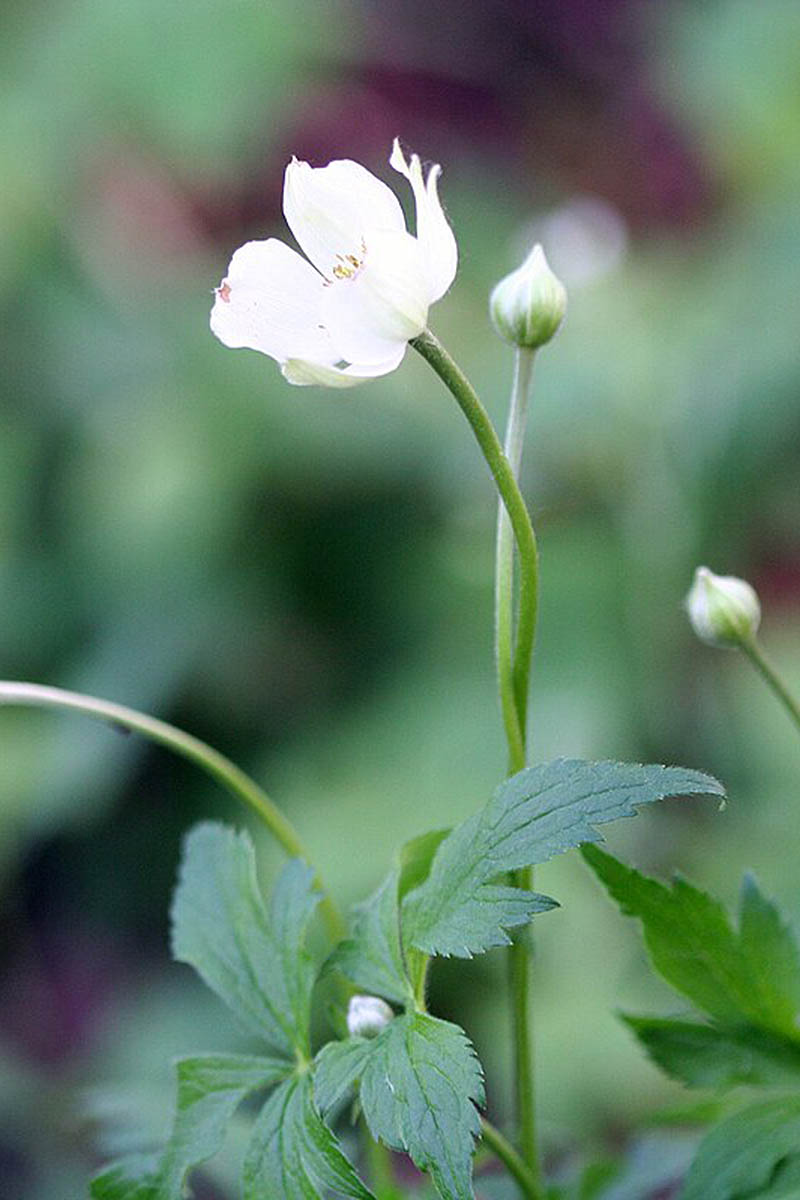

These plants don’t get wider than a foot across, but they do look best en masse, planted in large groups of 10 or more.
For that reason, choose somewhere with a little space for mass planting. They also self sow nicely, and will increase their numbers over time.
Once this species is established, you will rarely need to water it. However, during dry spells, even rugged species like thimbleweed benefit from a good soaking drink.
If no rainfall appears after a week or more, place a hose at the base of your plants. Turn it on to a trickle and leave it for 45 minutes to really let the water soak down into the roots.
Growing Tips
- Grow in full to partial sun, in freely draining soils.
- Plant in groups of 10 or more.
- Leave space for these efficient self-sowers to spread.
- Water during dry spells.
Pruning and Maintenance
When it comes to maintenance, thimbleweed is delightfully hassle free. Plant it in your garden, let it spread as the years pass, and leave it alone.
Do not be tempted to prune this species, unless leaves show obvious signs of disease such as discolored blotches. Find more on that in the pest and disease section below.
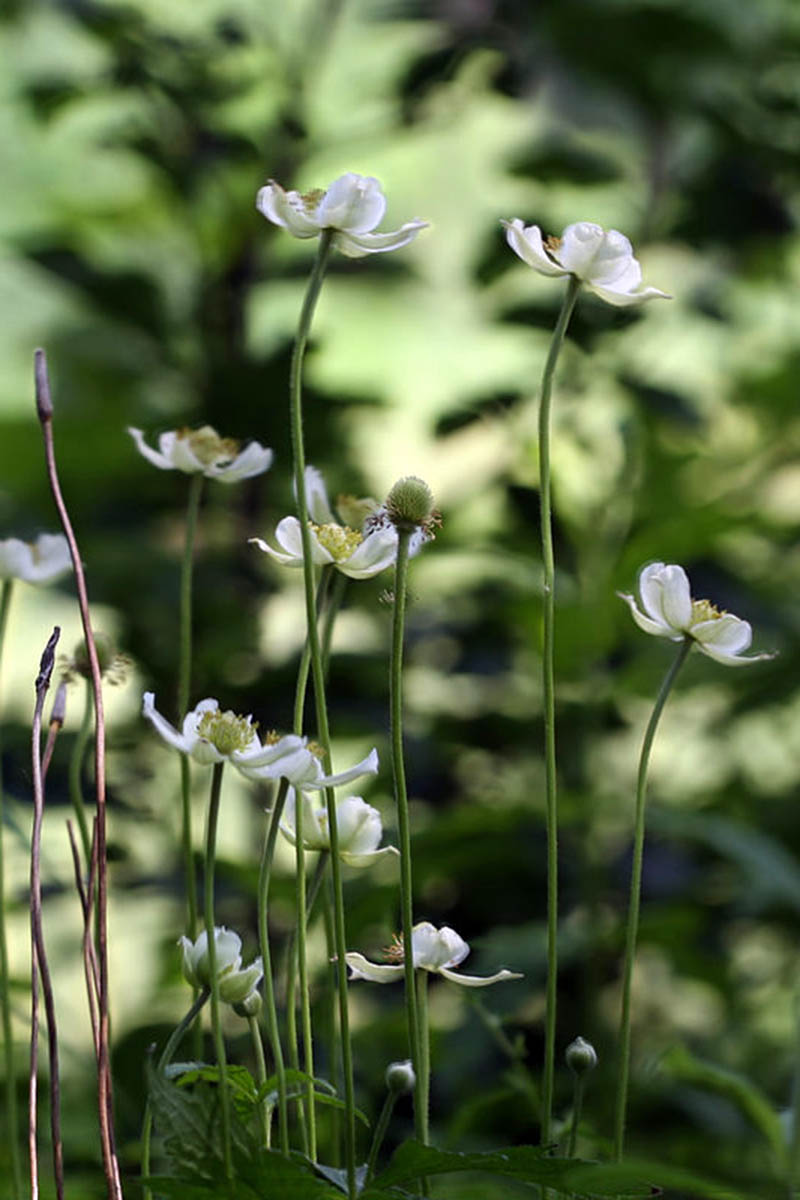

Some sources may suggest removing spent flowerheads after blooming, but this is wildflower sacrilege!
The real star of the A. virginiana show are its wonderful, fluffy seed heads, which will only form if the flowers are left to senesce and ripen into fruits.
This species requires no fertilization either. In fact, like most native wildflowers, thimbleweed is adapted to nutrient-poor soils and prefers substrate on the leaner side.
Where to Buy Thimbleweed
If you can’t find a local nursery with A. virginiana in stock, you can purchase seeds online.
Walmart carries packets of 300 thimbleweed seeds from Everwilde Farms.
Managing Pests and Disease
Thimbleweed is one of the toughest, most disease resistant members of the genus Anemone.
Although it is susceptible to some issues related to overwatering, its toxic leaves make it unpalatable to herbivores like rabbits and deer. Even slugs and snails don’t bother it.
Pests
The cocktail of chemical compounds that make thimbleweed toxic to humans also gives it tremendously good protection against pests.
If you’re looking for a problem-free flower that’s pretty much impervious to pests, look no further.
Of course, in adverse conditions, it is possible for aphids or spider mites to visit, but they’ll typically go after other plants before feeding on your thimbleweed.
Disease
Again, most problems that arise with A. virginiana are related to overwatering.
Plant it in the freely draining soils it loves and don’t water except in dry spells once established, and you’re almost guaranteed disease-free plants.
Here are a few issues you might encounter if plants are grown in sub-optimal conditions:
Leaf Spot
“Leaf spot disease” is a general term for any type of fungal infection that can cause discolored blotches on foliage. There are numerous species of fungi that can cause this disease, and by and large, it is an aesthetic problem.
Plants affected by leaf spot are often already stressed by too much watering, overcrowding, or not enough sunlight.
Making sure you’ve sited your thimbleweed in optimal conditions will help it to avoid leaf spot, but if you do notice signs of this unbecoming disease, simply prune off and destroy any affected leaves.
Powdery Mildew
There are numerous species of fungi that may cause this common disease.
Typically appearing during dry spells when plants are stressed, powdery mildew is especially common in areas of poor air circulation.
The infection appears initially as white spots on young leaves and spreads to cover leaf surfaces with a powdery coating.
The good news is that powdery mildew won’t affect thimbleweed’s growth and development much.
If you happen to catch the infection at its onset, pull off any diseased leaves and destroy them by throwing them away in the garbage or burning them.
Never put diseased leaves into the compost as this will only spread the fungal spores further.
Ensuring your plants are growing in optimal conditions will give them the fortitude they need to fight off diseases like powdery mildew. Remember to site thimbleweed somewhere with at least partial sun, and freely draining soil.
When you need to water, remember to always water the soil, not the leaves. Wet foliage helps to spread fungi.
You can learn more about powdery mildew and how to treat it in our guide.
Rust
Rust is a common fungal infection in many plants. Although not a common problem for thimbleweed, the bumpy, orange-colored blemishes this disease creates can be an eyesore.
Fortunately, this condition is typically not life-threatening and disappears once affected foliage is pruned off and disposed of.
Plants become susceptible to rust if they’re living in overcrowded, warm, humid conditions.
Keep old, decaying foliage out of the garden, space your plants out, and water on the ground, rather than overhead. These few simple measures can do a lot to keep your thimbleweed fungus free.
Best Uses for Thimbleweed
Undoubtedly best when grown en masse, thimbleweed looks lovely when planted across a patch of unmowed grass, or along a woodland edge.
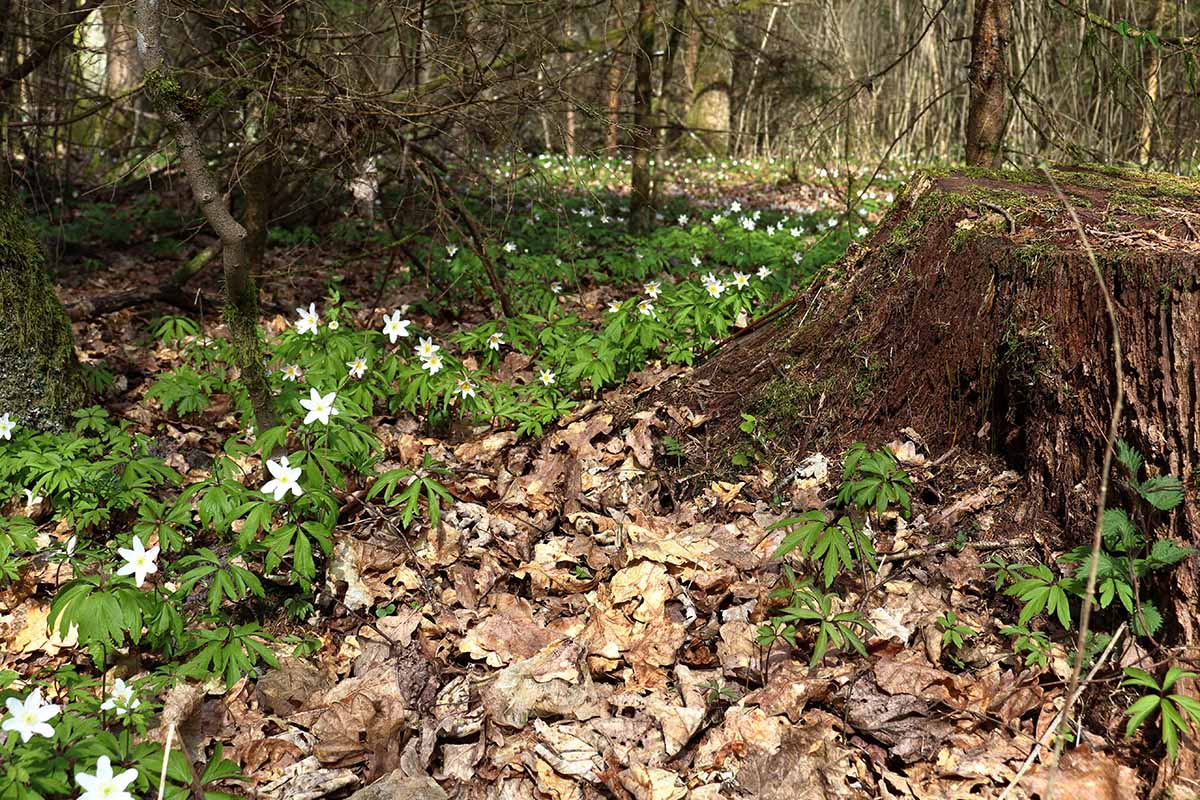

If you’re lucky enough to have a trail running through your property, harvest the seed each summer and scatter it as you walk. It won’t be long until these wildflowers line your walkway.
You can try this species in rocky soils, on the edge of a fringe of trees, or out in an unkempt meadow that doesn’t get mowed more than once every three to five years.
If you’d rather stick with a more orderly method of growing these native flowers, try them in clumps in a garden bed. They’re a nice muted addition to the bold, bright, and often gaudy garden flowers of May.
Quick Reference Growing Guide
| Plant Type: | Herbaceous flowering perennial | Flower/Foliage Color: | Creamy white/green |
| Native to: | Central and eastern North America | Tolerance: | Drought, heat, herbivores |
| Hardiness (USDA Zone): | 2-8 | Maintenance: | Low |
| Bloom Time: | Late spring to early summer | Soil Type: | Moist loam |
| Exposure: | Full sun to part shade | Soil pH: | 6.0-7.0 |
| Time to Maturity: | 2 years | Soil Drainage: | Well-draining |
| Spacing: | 12 inches | Attracts: | Bees, beetles, butterflies |
| Planting Depth: | Surface sow (seeds), root ball even with ground (transplants) | Uses: | Garden bed, naturalizer, woodland garden, wildlife garden |
| Height: | 2 feet | Order: | Ranunculales |
| Spread: | 1 foot | Family: | Ranunculaceae |
| Water Needs: | Low | Genus: | Anemone |
| Common Pests and Diseases: | Aphids, spider mites; leaf spot, powdery mildew, rust | Species: | Virginiana |
Thimbleweed, a Standout Stalwart
Thimbleweed is one of those wildflowers whose understated looks belie its enormous appeal to pollinators.
Tough yet dainty, this sweet native looks wonderful growing en masse in naturalized areas where it can be allowed to spread over time.
It’s also a terrific filler-in of gaps in the garden bed. Just make sure you give it somewhere to grow with freely draining soil and at least partial sun.
Do you grow thimbleweed at home? Where did you buy it? Tell us where you planted yours, how they’re doing, and any challenges you’ve encountered. We love to hear from you. Comments are always welcome!
To learn more about growing anemones, check out the following guides next:
[ad_2]

